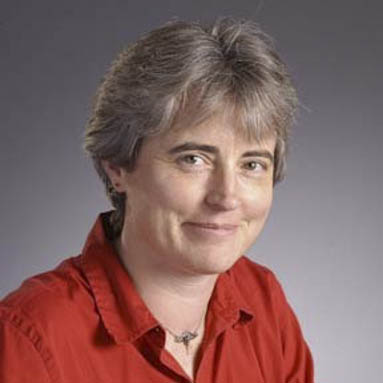Who is making sure the world meets its energy needs while minimizing risks to the planet? Your first guess might not be the world’s largest petroleum company. But during a sabbatical research project with Saudi Aramco, WPI professor Nancy Burnham—an avowed environmentalist—learned that, in fact, the company uses methods such as nanotechnology to extract resources with the least possible disruption of the environment.
“Before I learned much about oil companies, I thought of them as a typical environmentalist does,” says Burnham, who has previously consulted with Saudi Aramco. Saudi Aramco is the state-owned oil company of the Kingdom of Saudi Arabia and a fully integrated, global petroleum and chemicals enterprise.

Nancy Burnham (back row, center) with Reservoir Engineering Technology team
leader Martin Poitzsch (back row, fourth from left) and their team.
“It’s true, oil companies have a lot of wealth. But they also bring us a valuable resource we’ve come to depend on, and most have made investments in renewable energy. They know, for the company’s future, they have to start investing in renewables,” she says.
During her sabbatical, Burnham, associate professor of physics and biomedical engineering, worked with the company’s nanotechnology research center in Boston. The research focused on how to make oil extraction more efficient.
“It turns out, when you put an oil well down, the oil is not sitting there waiting for you. It doesn’t all gush right out, like you see on television,” she says. About 10–25 percent of the available oil comes up by itself. The next 20–25 percent is more difficult to extract, and the remaining 50–70 percent is harder still, depending on the geology of the site, she explains.
Oil companies could leave the rest of the oil in place and move on to another field to take out the easier first 25–50 percent. But that option is inefficient and short-sighted, Burnham explains. First, it requires a great amount of infrastructure to remove half the oil; it’s inefficient and costly to pull up stakes and move to another site, leaving available oil behind. Also, “Many of the safety issues with oil extraction are associated with ground level spills. So the fewer oil wells we need, the lower the risk [of a spill] should be,” Burnham adds.
Moreover, even a very optimistic timeline for the U.S. to go completely renewable is 30 years, and renewables are not a steady source of energy, she points out. In order to heat homes, power cars, and make products, oil companies can’t afford to leave oil behind.
The solution is to coax the remaining oil out of the ground using tools and technology.
“Oil fields are very complicated, with many layers of rock. You can’t just jump in a magic spaceship and fly down to see where it is. You need tools to help estimate where it is,” Burnham says.
One technique takes advantage of having multiple wells in one field. Extracting from one well causes the oil below ground to flow a bit. By shooting engineered nanoparticles into the one well, you can monitor surrounding wells and in several weeks detect where the particles are emerging. This tells the engineers which way the oil is diffusing, which points to where future wells should be to get the rest of oil out, Burnham says.
“Professor Burnham’s research is an example of the scientific and technological work that is occurring at WPI to improve the balance between current societal benefits and long-term global sustainability.” -John Orr
Another challenge is that oil particles tend to stick to each other and other rock walls, making them hard to extract. That stickiness, plus the fluid’s make-up of oil, brine, and water, make it chemically difficult for the particles to diffuse easily from one well to the next. Burnham and her Aramco colleague Shannon Eichmann have published a paper on how, through nanotechnology, engineers could modify the chemistry so the particles tend not to stick to the rock walls and migrate more easily to the next well.
Burnham’s work has resulted in two papers, a manuscript under review, and three invited talks. She says her sabbatical gave her a new appreciation for rocks as nanostructures and taught her how to help people understand that oil companies could be thought of more broadly as energy companies.
“I really learned a lot. It was refreshing because the work was so different and I saw how things I know can be applied to a completely different field,” she says.
Outgoing director of sustainability John Orr acknowledges that as green energy sources and technologies ramp up, it is important to make fossil fuel extraction as environmentally benign as possible.
“On campus and globally, opinions range widely regarding our extraction and use of petroleum products,” Orr says. “Fortunately, a large and growing portion of the population recognizes the importance of moving to clean and renewable sources of energy as rapidly as possible. In the meantime, we must work to minimize the environmental harm of the production and use our carbon-based energy sources.
“Professor Burnham’s research is an example of the scientific and technological work that is occurring at WPI to improve the balance between current societal benefits and long-term global sustainability,” he says.
Burnham's experience gave her insight into the differences between industry and academia.
“Interacting with students, I can now say I have some experience in industry and can better advise students about their careers,” she says. In fact, through her association with Saudi Aramco, she was able to recommend a WPI grad student for a job there. The student was subsequently hired, a result from her sabbatical that she finds very rewarding.
- By Cate Prato





